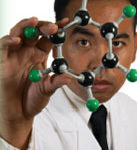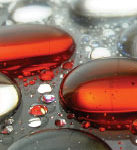Benzene is the most common aromatic hydrocarbon, however several other commercially important aromatics are also produced on a scale of millions of pounds annually. We add Benzene, toluene, and the xylenes to unleaded gasoline to raise the octane number. And we use other aromatics, derived from the petrochemical industry, in products such as polyesters, polyurethanes, polystyrene, synthetic rubber, detergents, pharmaceuticals, flavors, perfumes, plasticizers, and many others. To meet the ever increasing need for the analysis of all of these various aromatic hydrocarbons, we configure the DPS Aromatics GC Systems with the latest designed high resolution capillary column and the sensitive FID detector to quickly detect these compounds. The Series 600 GC is for analyses in the lab, or use the Portable Companion 1 GC Systems for analyses right where the samples are taken. The fast heating and rapid cooling column oven in every DPS GC vastly increases your sample throughput. The fully integrated Aromatics GC Analyzer Systems are small and lightweight and all Quality Control DPS systems are modular for expandability, upgrades, and easy service.








